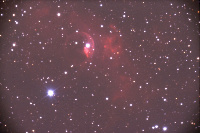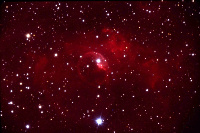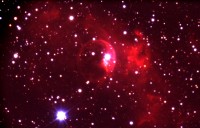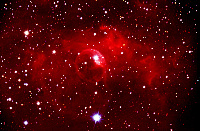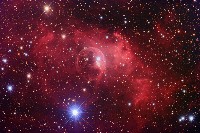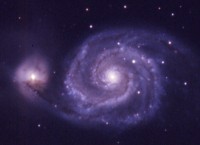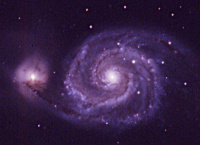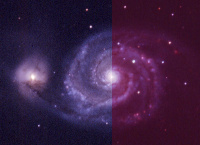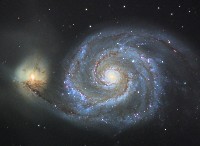I started taking film astrophotos in the Spring of 2003, and was exclusively
using Fuji Provia 400 Slide film at the beginning. On the recommendation of
several folks who saw my images (especially
Michael Covington),
I started experimenting with Kodak E200 in the Fall of 2003.
I've posted a few comparison images below, taken with the same instrument of
the same objects, but with different film.
While the differences are easy to spot, neither film is better overall, just
better within their regions of strength. The Kokak E200 film is better for
any objects with a dominant red component, such as emmision nebulosity, while
the Fuji Provia film is better for any objects with a dominant blue component,
such as reflection nebulosity. The Fuji film also records fainter detail in
galaxies, though the Kodak film picks out active regions in a more aesthetic
fashion.
For bright star clusters, neither is a clear winner, though I don't
like the reddish cast of the dimmest star images in the Kodak E200 images,
which appears to be more of an artifact of reciprocity failure than actual
star colors. In other words, the red layer records fainter stars than either
the blue or green layer, so the faintest stars appear red.
See
Don Westergren's site for detailed analyses of the performance of these
slide films, as well as various print films.
